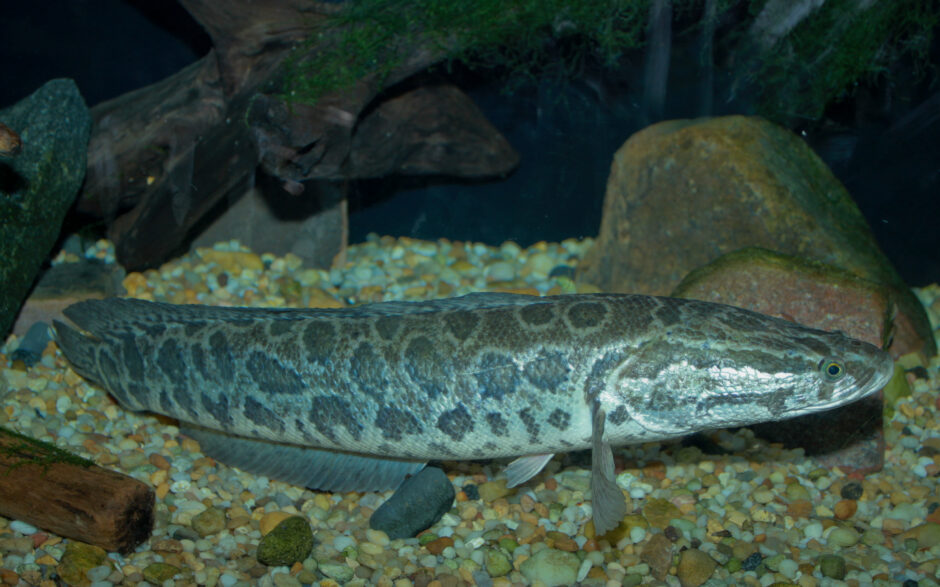Northern Snakehead Fish Push Into Upper Potomac River
 Northern snakehead. (Credit: Brian Gratwicke via Flickr CC BY 2.0)
Northern snakehead. (Credit: Brian Gratwicke via Flickr CC BY 2.0)Invasive northern snakeheads have been crashing through the Potomac River since 2002. Still, the species has managed to cover an impressive amount of ground, being found near Scrabble, West Virginia, on June 10, 2022. The discovery came as a shock to DNR groups in the Potomac River region as it set a new record for the farthest north the fish has been able to travel. Part of a long list of invasive species, northern snakeheads are a significant issue for state resource managers.
The Problem with Northern Snakeheads
Prior to England’s colonization, the Potomac River was filled with native life that was fished by indigenous communities for generations. As time went on and the United States was founded, new species were intentionally introduced to the region. Harald-Mail Media reports that species like smallmouth bass (est. 1854), carp (est. 1878), and even walleye (est. 1989) were all brought into the region. These species fit well into the ecosystem and were popular with anglers in the region.
In contrast, snakeheads presented an immediate problem for prey and predators in the Potomac River. Snakeheads eat a lot and are quite aggressive toward other fish during spawning, which occurs five times a year, according to the Smithsonian’s National Zoo & Conservation Biology Institute—a far cry from smallmouth bass, which spawns once a year. Snakeheads also have a voracious appetite, not unlike other predators in the region, but having two or more major predators in the waterway leads to tough competition for other fish as well as declining prey populations as they are overconsumed.
How Northern Snakehead Got Here
According to the Chesapeake Bay Program, snakeheads originated from China, Russia, and Korea and were likely introduced to the watershed by local fishermen and exotic aquariums in the late 20th century. Snakeheads also possess the unique ability to breathe out of the water, meaning they can cross small pieces of land to new bodies of water.
Due to the species’ frequent spawning and tough personality and behaviors, local DNRs are not hopeful that they’ll ever truly be able to get rid of snakeheads, nor will they be able to stop their spread further north. Many gave up hope of ever controlling the population in 2015, when the species reached Great Falls near Washington D.C., as reported by CBS News.
Fisheries biologists studying the development say that there isn’t much that can be done now that the snakeheads have made it past the C&O Canal. The best hope for keeping their numbers down could be anglers who catch them, they say.
“They’re absolutely not going anywhere,” said Joseph Love, an official with the Maryland Department of Natural Resources, to the TV station. “If I’ve learned anything from working with snakeheads, once you’ve seen them in your waterway, they’re likely going to be there for a long time, if not forever.”
Conclusion
While it is unlikely that snakehead will be removed from the Potomac River entirely, there are steps anglers, and residents can take to control the population size. Catching and killing snakeheads is one simple step that can be taken to control populations. Returning to the origin of northern snakeheads in the Potomac River, fish enthusiasts who keep them as pets must take care to keep the fish in captivity their entire life.
Reports of snakeheads in other parts of the U.S. have also cropped up in recent years, with reports coming out of states like Georgia, according to WJCL 22. Hoping to get ahead of the invasion, Georgia officials urged anglers who caught the fish to kill them immediately in order to prevent them from spawning or crossing any land to reach new waterways.
As with all invasive species management, controlling the population requires collaboration between anglers, the public and state resource departments.


0 comments